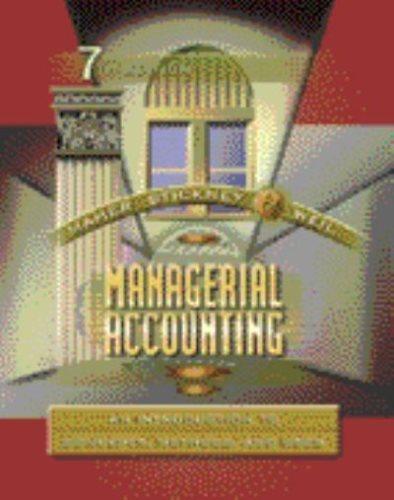Impact of division performance measures on management incentives. Nomran Group manages a bunch of fitness centers in
Question:
Impact of division performance measures on management incentives. Nomran Group manages a bunch of fitness centers in Europe and Asia. The home office staff of The Notnram Group evaluates managers of the Nomram divisions by keeping track of the rate of return each division earns on the average level of assets invested at the division.
The home office staff considers 20 percent, which is The Nomram Group's aftertax cost of capital, to be the minimum acceptable annual rate of return on average investment. When a division's rate of return drops below 20 percent, division management can expect an unpleasant investigation by the home office and perhaps some firings.
When the rate of return exceeds 20 percent and grows through time, the home office staff is invariably pleased and rewards division management. When the rate of return exceeds 20 percent but declines over time, the home office staff sends out unpleasant memorandums and cuts the profit-sharing bonuses of the division managers.
In Division A, average assets employed during the year amount to $60,000. Division A has been earning 40 percent per year on its average investment for several years. Management of Division A is proud of its extraordinary record — earning a steady 40 percent per year.
In Division B, average assets employed during the year also amount to $60,000. Division B h as been earning 25 percent per year on its average investment. In the preceding 3 years, the rate of return on investment was 20 percent, 22 percent, and 23 percent, respectively.
Management of Division B is proud of its record of steadily boosting earnings.
New investment opportunities have arisen at both Division A and Division B. In both cases, the new investment opportunity will require a cash outlay today of $30,000 and will provide a rate of return on investment of 30 percent for each of the next 8 years. The average amount of assets invested in the project will be $30,000 for each of the next 8 years. Both new investment opportunities have positive net present value when the discount rate is 20 percent per year (the after-tax cost of capital of The Nomram Group).
When word of the new opportunities reached the home office staff, the prospects of the two new investments pleased the staff, because both investments would yield a better-than-average return for The Nomram Group.
Management of Division A computed its rate of return on investment both with and without the new investment project and decided not to undertake the project.
Management of Division B computed its rate of return on investment both with and without the new investment project and decided to undertake it.
When word of the two divisions' actions reached the home office staff, it was perplexed.
Why did Division A's management turn down such a good opportunity?
What in the behavior of the home office staff induced Division A's management to reject the new project? Is management of Division B doing a better job than management of D ivision A? What may the home office do to give Division A an incentive to act in a way more consistent with the well-being of The Nomram Group?
Step by Step Answer:

Managerial Accounting An Introduction To Concepts Methods And Uses
ISBN: 9780030259630
7th Edition
Authors: Michael W. Maher, Clyde P. Stickney, Roman L. Weil, Sidney Davidson





